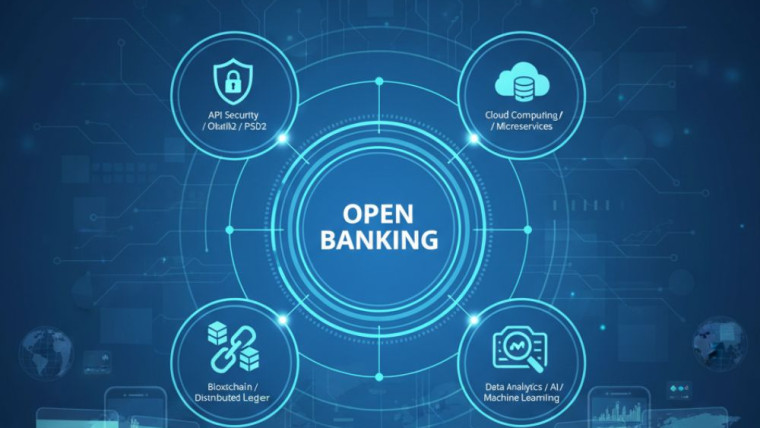The financial sector stands at a crossroads where environmental responsibility meets technological innovation. As climate concerns intensify and regulations tighten, financial institutions are discovering that sustainability isn’t just good for the planet—it’s essential for business survival.
Green finance and fintech have emerged as powerful allies in this transformation. Traditional financial services are being reimagined through digital platforms that prioritize environmental, social, and governance (ESG) factors. From mobile apps that help users invest in renewable energy projects to AI-powered tools that assess climate risks, technology is making sustainable finance more accessible, efficient, and transparent than ever before.
This convergence represents more than a trend; it signals a fundamental shift in how we approach investment decisions and financial planning. For investors, financial advisors, and institutions, understanding this intersection has become crucial for navigating the evolving financial landscape and capturing emerging opportunities in the sustainable economy.
The Evolution of Green Finance Through Technology

Green finance has grown from a niche concept to a mainstream financial priority, driven largely by technological advancements. Sustainable finance technology has democratized access to ESG investments, enabling both institutional and retail investors to align their portfolios with their values.
Digital finance and ESG integration have transformed how financial data is collected, analyzed, and reported. Advanced analytics platforms now process vast amounts of environmental data in real-time, providing investors with unprecedented insights into the sustainability performance of their investments. This technological infrastructure supports more informed decision-making and helps identify emerging risks and opportunities in the green economy.
The rise of sustainable fintech solutions has also addressed traditional barriers to ESG investing, such as limited access to information and high minimum investment requirements. Mobile-first platforms have made impact investing with technology accessible to younger demographics who prioritize sustainability but may have smaller investment accounts.
Dig Deeper: What is Fintech
How Fintech is Revolutionizing Sustainable Investments
Digital Platforms for Green Investments
Modern fintech platforms have simplified the process of identifying and investing in sustainable opportunities. These eco-friendly financial technology solutions use sophisticated algorithms to screen investments based on environmental criteria, making it easier for users to build portfolios aligned with their sustainability goals.
Climate-focused investing platforms leverage machine learning to analyze company sustainability reports, regulatory filings, and third-party ESG ratings. This automated approach reduces the time and expertise required for sustainable investment research, opening up green finance to a broader audience.
Automated ESG Screening and Analysis
Fintech for sustainable investments has introduced automated screening tools that can evaluate thousands of companies against ESG criteria in seconds. These systems analyze factors such as carbon emissions, water usage, labor practices, and corporate governance structures to provide comprehensive sustainability scores.
Advanced platforms go beyond basic screening to offer predictive analytics that forecast how environmental trends might affect investment returns. For example, some systems can model the potential impact of carbon pricing regulations on specific industries or assess how climate change might affect agricultural investments.
Blockchain and Transparency in Green Finance
Blockchain technology has emerged as a powerful tool for ensuring transparency in sustainable finance. Green bonds and fintech platforms increasingly use distributed ledger technology to track how funds are used and verify that investments deliver promised environmental benefits.
This transparency addresses one of the biggest challenges in green finance: greenwashing. By creating immutable records of fund allocation and impact metrics, blockchain helps investors verify that their money is genuinely supporting sustainable projects.
Dig Deeper: How Digital Finance and FinTech Improve Financial Inclusion
Key Fintech Solutions Driving Green Finance

Robo-Advisors for Sustainable Portfolios
Robo-advisors have integrated ESG criteria into their automated investment algorithms, making sustainable portfolio management available to investors who might not have access to human financial advisors. These platforms use questionnaires to understand clients’ sustainability preferences and automatically adjust portfolios to reflect those values.
The sophistication of these systems continues to evolve, with some platforms now offering customizable ESG filters that allow investors to exclude specific industries or prioritize particular sustainability themes, such as clean energy or social justice.
Mobile Apps for Impact Investing
Smartphone applications have made impact investing more accessible and engaging. Many apps allow users to invest spare change from purchases into ESG funds or provide educational content about sustainable investing. Some platforms gamify the experience, showing users the environmental impact of their investment decisions through visual dashboards and progress tracking.
These mobile-first approaches have proven particularly effective at engaging younger investors who are digital natives and tend to prioritize sustainability in their financial decisions.
Crowdfunding Platforms for Green Projects
Fintech has enabled new forms of green project financing through crowdfunding platforms. These systems allow individuals to directly fund renewable energy installations, sustainable agriculture projects, and other environmental initiatives that might not attract traditional institutional funding.
Peer-to-peer lending platforms have also expanded to include green lending options, where individuals can fund energy efficiency improvements or electric vehicle purchases for other consumers.
The Role of Technology in ESG Compliance and Reporting
Automated Data Collection and Analysis
ESG compliance in fintech has been streamlined through automated data collection systems that gather information from multiple sources, including company reports, regulatory filings, news articles, and satellite imagery. This comprehensive approach provides more accurate and timely ESG assessments than traditional manual methods.
Natural language processing helps analyze unstructured data from corporate communications and news sources to identify ESG-related risks and opportunities that might not be captured in formal reports.
Real-Time ESG Monitoring
Technology enables continuous monitoring of ESG performance rather than relying on annual or quarterly updates. Real-time data feeds can alert investors to changes in a company’s environmental performance, such as increased carbon emissions or environmental violations.
This immediate access to information allows for more responsive investment strategies and helps investors avoid exposure to companies experiencing ESG-related controversies.
Standardized Reporting Through Technology
One of the biggest challenges in ESG investing has been the lack of standardized reporting frameworks. Technology platforms are addressing this by creating unified dashboards that translate different ESG reporting standards into comparable metrics.
Machine learning algorithms can normalize data from various reporting frameworks, making it easier for investors to compare the sustainability performance of different investments and track portfolio-level ESG metrics.
Emerging Trends in Green Fintech
Artificial Intelligence in Climate Risk Assessment
AI-powered systems are becoming increasingly sophisticated at assessing climate-related financial risks. These platforms can analyze complex environmental data to predict how climate change might affect specific investments or geographic regions.
Fintech sustainability trends indicate growing use of satellite data, weather patterns, and climate models to assess physical risks such as flooding, drought, or extreme weather events that could impact investment returns.
Integration of Carbon Accounting
Carbon footprint reduction through finance has become a priority for many institutions and investors. Fintech platforms are integrating carbon accounting tools that help users understand and reduce the carbon footprint of their investment portfolios.
Some platforms now offer carbon offset features that automatically purchase verified carbon credits to neutralize the environmental impact of investment activities.
Sustainable Digital Banking
Digital banks are incorporating sustainability into their core operations, offering features such as carbon footprint tracking for spending, rewards for sustainable purchases, and automatic investments in green funds. Sustainable digital banking represents a holistic approach to aligning financial services with environmental values.
These platforms often provide educational content and tools to help customers make more sustainable financial decisions, extending their impact beyond investment services to everyday banking activities.
Challenges and Opportunities in Green Fintech
Regulatory Compliance and Standards
As green finance regulations evolve, fintech companies must adapt their platforms to ensure compliance with new requirements. This presents both challenges and opportunities, as companies that build robust compliance capabilities early may gain competitive advantages.
The development of global ESG reporting standards will likely drive innovation in fintech solutions that can efficiently collect, process, and report sustainability data across different jurisdictions.
Data Quality and Verification
Ensuring the accuracy and reliability of ESG data remains a significant challenge for fintech platforms. Companies are investing in advanced verification systems and partnering with established ESG data providers to improve the quality of their sustainability assessments.
Blockchain technology and IoT sensors are emerging as solutions for improving data verification and creating more trustworthy sustainability reporting systems.
Market Education and Adoption
Many potential users still lack an understanding of ESG investing concepts and the benefits of sustainable finance. Fintech companies have an opportunity to drive adoption through educational content, user-friendly interfaces, and a clear demonstration of impact.
Gamification and social features can help make sustainable investing more engaging and encourage broader adoption of responsible investment technology.
The Future Landscape of Sustainable Finance Technology

Integration with Traditional Financial Services
The future of green fintech lies in deeper integration with traditional financial services rather than operating as separate platforms. Major banks and investment firms are acquiring or partnering with fintech companies to incorporate sustainable finance capabilities into their core offerings.
This integration will likely lead to more sophisticated tools that can seamlessly blend traditional financial analysis with ESG considerations, providing more comprehensive investment guidance.
Advanced Predictive Analytics
Future platforms will likely offer more sophisticated predictive capabilities, using AI to forecast how environmental trends, regulatory changes, and social factors might affect investment performance over time.
These tools will help investors make more informed decisions about long-term sustainability trends and position their portfolios to benefit from the transition to a more sustainable economy.
Global Accessibility and Inclusion
Technology will continue to expand access to sustainable finance globally, particularly in emerging markets where traditional financial infrastructure may be limited. Mobile-first platforms and partnerships with local financial institutions will help bring sustainable investing options to underserved populations.
Building a Sustainable Financial Future Through Technology
The convergence of green finance and fintech represents a powerful force for positive change in the global economy. As technology continues to evolve, we can expect even more innovative solutions that make sustainable investing more accessible, efficient, and impactful.
Success in this space will require continued collaboration between technology companies, financial institutions, regulators, and investors. By working together to address challenges such as data standardization, regulatory compliance, and market education, the industry can build a financial system that supports both economic growth and environmental sustainability.
The organizations and individuals who embrace these technological innovations will be best positioned to thrive in an economy increasingly focused on sustainability and long-term value creation. The future of finance is green, and technology is the key to unlocking its full potential.








Harnessing AI and Machine Learning for Fraud Detection in Digital Finance
AI Fraud Detection: How Banks Prevent Financial Crime in Real Time
Who is First Digital Finance Corporation?
AI Credit Scoring: Revolutionizing SME Banking and Digital Loans
AI Credit Scoring: Revolutionizing SME Banking and Digital Loans
AI Fraud Detection: How Banks Prevent Financial Crime in Real Time
Embedded Finance: How Seamless Financial Services Are Integrating into Everyday Apps
AI-Powered Credit Scoring: Revolutionizing Digital Lending in the Digital Finance Era